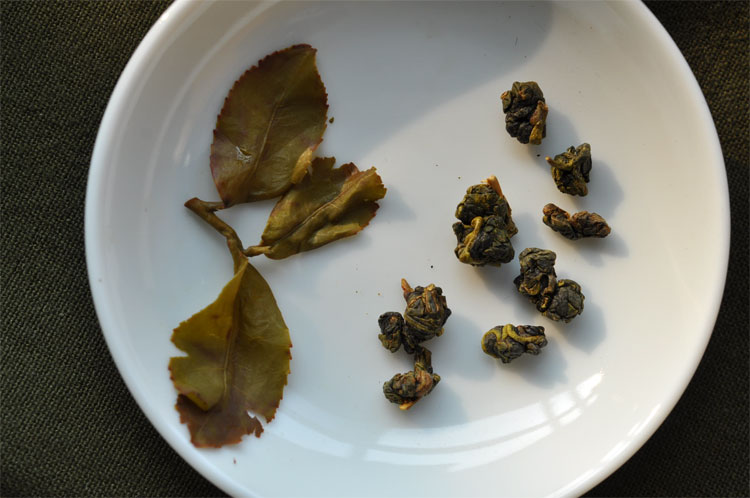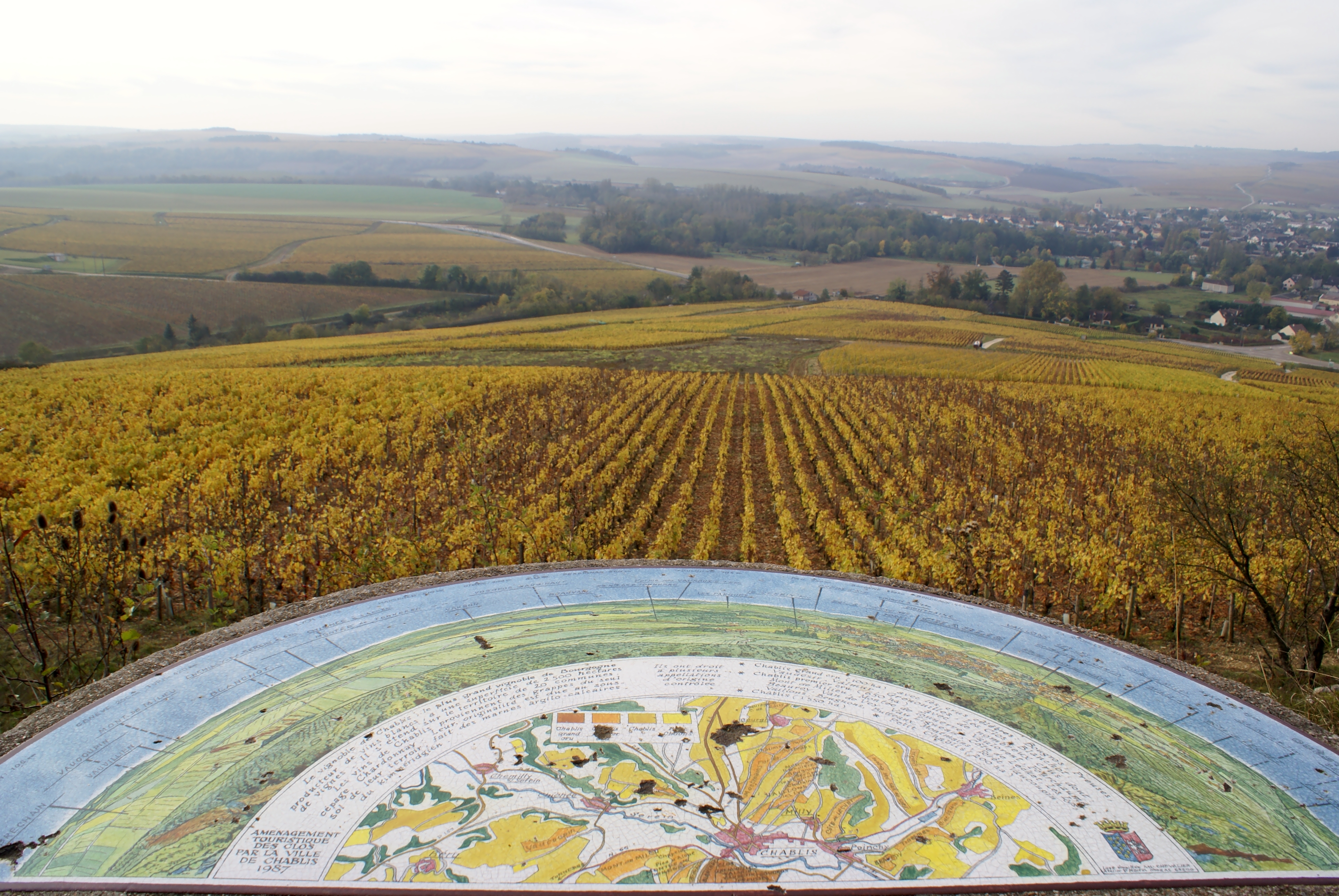Wine and tea
Posted on 29 July 2011
I’ve been writing about wine and tea on this blog for two years and a half now. I’m often asked how wine and tea compare. On the most superficial level, they are of course very different products: wine is drunk chilled or at room temperature, contains alcohol, is made from fruits with the use of fermentation. Tea is brewed with hot water and is less processed than wine: it is essentially just withered leaves. The habitats where the tea tree and vine strive are also different: tea requires a lot of water and humidity, and likes elevation; the prime harvest time for the best teas is as early as possible in spring. In contrast, the later you harvest grapes in the autumn, the better (within reasonable limits); rainfall is the vine’s main enemy, and mountain wine is the exception rather than the norm.
At a deeper level, however, there are lots of similarities between wine and tea. I’ll be exploring them in two installments, broadly divided into the domains of Nature and man.

Japanese tea regions: similar to the wine-producing areas of e.g. France. © Ryokucha.eu.
1. ‘Terroir’. Although the French word that describes the combined geographical, climactic and cultural conditions of a particular vineyard is strictly connected to wine, tea thinking in Asia follows a similar logic of associating quality to location. The best locations for growing tea have been identified hundreds if not thousands of years ago. The leading tea regions in Japan such as Uji, Shizuoka or Yame can be broadly compared to French wine regions such as Burgundy, Bordeaux and the Languedoc. In China, the subdivisions are even subtler. Xihu, the West Lake of the Zhejiang province, is a privileged tea habitat similar to a restricted wine area such as Barolo. The more detailed wine classification system into premiers and grands crus also has an analogy in tea: Lishan, Alishan, and Dayuling are single mountains in Taiwan that can be compared to wine crus. The difference in flavour between the teas they produce is roughly equivalent to that between a Chablis from, say, Vaillons, Fourchaume and Preuses. These subtle but identifiable differences are more obvious to those that can be observed in coffee or apple juice. Wine and tea express a sense of place more than any other agricultural product.
2. Genetic diversity. There are many thousands strains, varieties, or ‘cultivars’ of the vine used around the world. Merlot and Chardonnay alone might occupy more than 20% of the world acreage but even in a limited area such as the Loire Valley or Italy’s Piedmont, there are several dozen commercially viable cultivars that produce widely different types of wine – sometimes more different than apple and pear juice, even though the plant species is the same. The same grape variety transplanted e.g. 50 km away will adapt to the local conditions and become a related but essentially distinctive variety, as happens with the Sangiovese grape in Tuscany (Morellino, Sangiovese, Prugnolo and Brunello are biotypes of Sangiovese that yield fairly divergent wines), or Pinot Noir across Eastern France and Central Europe.

Chardonnay has a distinctive round leaf. © Edenwines.co.uk.
Tea cultivars rarely get that much attention but their diversity is similar. Japan grows several hundred tea varieties: again, Yabukita dominates quantitatively but many others, some traditional, some recently developed, contribute to the diversity. In China, every tea type is based on a different cultivar of tea, similarly to European wine appellations using different grape varieties. A look at the oolong-producing Wuyi area shows how intricate this can become: experts distinguish between Dahongpao tea made from the ‘original’, secular trees, their direct offspring, and the offspring of the offspring (there is also ‘fake’ DHP made from other cultivars and only process to resemble the real thing). Here, the situation is similar to grape variety clones such as 667 or UCD4 for Pinot Noir that give different characteristics to the wine. Grape clones can be reproduced by replanting the old plants (mass selection) or selecting clones in a vine nursery (clonal selection): Darjeeling is an analogy, distinguishing between ‘original’ China trees, and clonal trees that belong to a few selected cultivars such as AV2, B157, RR etc.

Just as Chardonnay, the Jinxuan tea cultivar can be dinstinguished by the shape of its leaves. © Teamasters.blogspot.com.
Even when planted in exactly the same location and processed with the same method, different cultivars of vine and tea will produce obviously different results: see a Grüner Veltliner and Riesling from the same vineyard in Austria’s Wachau, for example, versus two parallel Taiwanese oolongs from the Qingxin and Jinxuan plant, or Japanese senchas from Yabukita and Yutakamidori.
3. Worldwide expansion. For two thousand years viticulture was limited to its original habitat: the Caucasus, Asia Minor, the Mediterranean basin, and places in continental Europe where the vine was spread by the Romans, including Burgundy, Germany and Austria. With European colonisation of other continents, wine production spread to new places that are generically called the ‘New World’: the Americas, South Africa, Australia and New Zealand as well as (more recently) some places in Asia. All these places can produce top quality wine but the production structure is very different: the Old World is dominated by small family estates, ancient local varieties are grown, and the wine is predominantly consumed locally in a cultural context that developed over centuries (e.g., wine combination with food). The New World, on the other hand, focuses on exports, large producing companies, and a handful of most popular marketable grape varieties.

An unexpected place to grow tea: the Azores islands. © Gorreana tea.
Something similar happens in the world of tea. China boasts an incredible diversity of tea types, many of which are very local in character. China is the world’s biggest producer but also consumer of tea, similarly to France or Italy in the case of wine. Historically, the tea tree was exported to such countries as Korea, Japan and Vietnam, where local traditions developed, representing a modification of the Chinese approach – just like Germany or Portugal developed their own wine types. The New World of tea is countries like Kenya, Malawi, Argentina or even Australia, England and the Azores. These producers range from curiosities to big suppliers of generic bulk tea, but have yet to develop the upper echelons of quality and a more multi-layered tradition of tea culture.
Visit my blog soon for Part 2: similarities between wine and tea in the production process.


